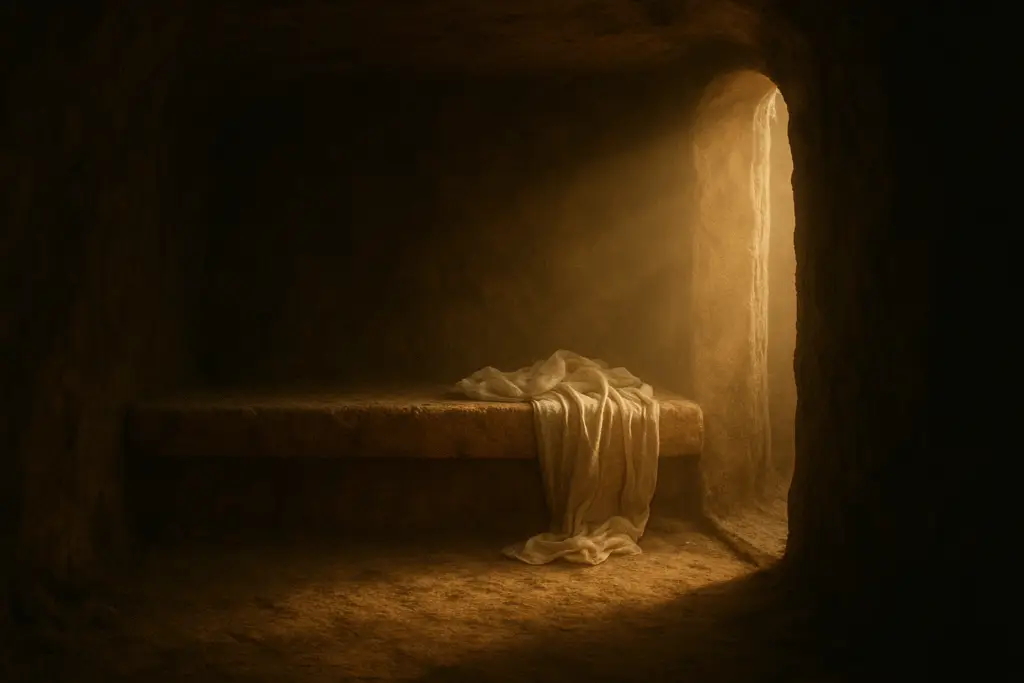The events of Holy Week—from Jesus’ triumphal entry into Jerusalem to his resurrection—constituted not merely spiritual moments but profound political challenges to the established powers of first-century Judea. To grasp the revolutionary nature of these events, we must understand the complex power dynamics of Roman-occupied Palestine and how Jesus’ actions directly confronted both imperial authority and religious establishment.
Palm Sunday: A Royal Counterclaim

When Jesus entered Jerusalem riding on a donkey, he enacted a deliberately provocative political theater. By fulfilling Zechariah’s prophecy—”Behold, your king is coming to you; righteous and having salvation is he, humble and mounted on a donkey” (Zechariah 9:9)—Jesus made an unmistakable messianic claim. The crowds responded accordingly, spreading cloaks and palm branches before him while shouting “Hosanna to the Son of David!” and “Blessed is the coming kingdom of our father David!” (Mark 11:10).
These were not politically neutral acclamations. To proclaim anyone “king” besides Caesar was sedition under Roman law. The palm branches themselves carried nationalist significance, having become symbols of Jewish independence after appearing on coins minted during the Maccabean revolt. By accepting these honors, Jesus positioned himself as an alternative sovereign to both Herod and Caesar.
The timing was equally significant. Jerusalem’s population swelled dramatically during Passover—a festival commemorating liberation from foreign oppression. Roman governors routinely increased military presence during these festivals, recognizing their revolutionary potential. Pilate himself would have entered Jerusalem from the opposite direction with imperial cavalry and foot soldiers, displaying Rome’s might. Jesus’ humble yet royal entry created a stark contrast—a different kind of power challenging Rome’s military dominance.
Temple Cleansing: Economic and Religious Disruption
Jesus’ subsequent action in the Temple further escalated the political confrontation. The Temple operated as both religious center and economic powerhouse—controlling vast wealth, employing thousands, and serving as the institutional base for aristocratic priestly families who collaborated with Roman authorities.

By overturning the tables of money-changers and declaring “My house shall be called a house of prayer, but you make it a den of thieves” (Matthew 21:13), Jesus disrupted both religious and economic systems. He challenged the Temple aristocracy’s moral authority while simultaneously interrupting the financial operations that undergirded their power. This was not merely symbolic—it constituted direct action against the economic interests of Judea’s ruling class.
The Temple authorities understood the political threat. John’s Gospel reveals their reasoning: “If we let him go on like this, everyone will believe in him, and the Romans will come and take away both our place and our nation” (John 11:48). Their concern was explicitly political—Jesus threatened the delicate power arrangement between Jewish authorities and Roman overlords.
Crucifixion: Imperial Justice Theater
Crucifixion itself was predominantly political punishment—Rome’s public terrorism against challenges to imperial authority. As historian Martin Hengel documented, crucifixion was reserved almost exclusively for sedition, rebellion, and crimes against the state. By executing Jesus as “King of the Jews,” Rome enacted public political theater demonstrating the consequences of challenging Caesar’s sovereignty.

The charge placed above Jesus—”This is Jesus, the King of the Jews” (Matthew 27:37)—explicitly framed his execution as punishment for political pretension. The scene itself reinforced imperial theology: Caesar’s representative (Pilate) exercising power of life and death, Rome’s military enforcing imperial will, and the collaboration of local elites in maintaining colonial order.
The message was clear: Rome determined who lived and died, and those claiming authority not sanctioned by empire would meet this fate. Jesus’ crucifixion represented the imperial system functioning exactly as designed—eliminating threats to established power.
Resurrection: The Ultimate Subversion
If crucifixion demonstrated Rome’s power, resurrection fundamentally challenged it. When the disciples proclaimed “Jesus is Lord,” they simultaneously declared “Caesar is not.” In Roman imperial theology, Caesar was divine, supreme ruler, and son of god. The resurrection narrative directly contested these claims—demonstrating that Caesar’s ultimate power (death) had been overcome.

The political implications were revolutionary. Rome’s authority rested substantially on its monopoly of violence and the fear it generated. By rising from the dead, Jesus revealed the limitations of imperial power. As theologian N.T. Wright observes, resurrection announced that “Caesar’s powerful present had been invaded by God’s future.”
Early Christian proclamation centered on Jesus as risen Lord who would return to judge the world—including its rulers. Acts summarizes the apostolic message as proclaiming “another king, Jesus” (Acts 17:7), language that directly challenged imperial sovereignty. The confession “Jesus Christ is Lord” functioned as counter-imperial theology, claiming allegiance to a different sovereign whose authority superseded Caesar’s.
Beyond Jewish Nationalism
Critically, Jesus’ political challenge was more complex than simple nationalism. Unlike zealots advocating violent resistance to Rome, Jesus rejected armed rebellion. Yet unlike Temple authorities accommodating imperial power, he refused to legitimate unjust systems. He presented a third way—a politics of the kingdom that transcended both violent revolution and passive acceptance of imperial domination.
This kingdom politics challenged the foundational assumptions of empire itself—that peace comes through violence, that hierarchy is natural, that power flows from coercion. Jesus offered an alternative political vision where the first are last, enemies are loved, and true authority comes through service rather than domination.
Legacy of Subversion
The early church lived out this political subversion in concrete ways. Christian communities practiced economic sharing that undermined imperial wealth stratification. They created alternative family structures crossing ethnic boundaries that challenged Rome’s hierarchical social ordering. They recognized the authority of slaves and women in ways that subverted patriarchal household codes fundamental to imperial stability.
Rome recognized the political threat. Pliny’s correspondence with Emperor Trajan reveals imperial concerns about Christian communities functioning as alternative societies with questionable loyalty to Rome. Subsequent persecution arose not because Christians held unusual theological beliefs, but because their practices and allegiances constituted political resistance to imperial authority.
Palm Sunday and Easter bookend a narrative of profound political challenge. Jesus entered Jerusalem as alternative king, confronted corrupt religious-economic systems, suffered the empire’s ultimate punishment, and then subverted that punishment through resurrection. The message was revolutionary: neither Rome nor death had the final word. Another authority existed, another kingdom was coming, and the powers of this world—both religious and imperial—stood under judgment.



